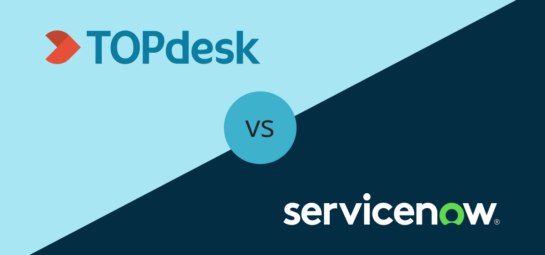3 ways to adapt your IT services to meet rising customer expectations

Customer expectations are on the rise: Microsoft’s Global State of Customer Service Report states that 55% of customers expect a higher level of customer service year on year. (Find out why in this blog. Spoiler alert: it has a little something to do with the consumerization of IT.)
To keep up, IT departments like yours can’t keep doing what they’ve always done.
Here are 3 ways to adapt your IT services to meet rising customer expectations:
1. Move from reactive to predictive support
According to Gartner, predictive support uses “continuous monitoring and […] trend analysis to prevent service-impacting events or incidents and guarantee performance and availability. Predictive services reach out to individual customer[s] before specific issues, which may be unknown and unpredictable, manifest themselves.”
Thinking “we’ll cross that bridge when we get there” when it comes to potential issues is understandable, especially when you’re busy with your day-to-day operations. But wouldn’t you like to know about a major outage before it becomes a bottleneck for your whole organization?
Of course, there will always be a reactive component to your services. Sometimes things just break and need to be fixed. But adding predictive support into the mix minimizes major service disruptions such as downtime and data loss, which means you’ll be helping your customers before they even know there’s a problem to begin with.
2. Break down silos between IT and other service departments with a SPOC
According to Salesforce’s State of the Connected Customer report, 76% of customers expect consistent interactions across departments. And yet, there’s usually little to no collaboration between IT and other service departments, even when it comes to services that require more than one department like the onboarding process.
Where does that leave the customer? Who is responsible for their overall onboarding experience? Is it IT? FM? HR?
Having a single point of contact (SPOC) in place will improve communication between service departments, remove any bottlenecks and help deliver better services.
The best thing about a SPOC? Your customers no longer have to wonder which department to go to with their questions. All they need to know is how to engage the SPOC – whether it’s via a self-service portal, e-mail, chat, a walk-up or a combination of these – and their question or issue will be addressed by the appropriate person.
One-size-fits all IT services simply won’t cut it anymore.
3. Create personalized customer experiences based on specific IT personas
Your customers don’t want to be treated like numbers. They expect your IT department to deliver highly personalized services that are tailored to their individual wants and needs, just like the great B2C experiences they’re used to.
One-size-fits all IT services simply won’t cut it anymore.
Think about it: depending on their role in the organization, your customers all use different hardware, software, and technologies – in different ways and for different purposes. If your IT department treats them all the same, you’re setting yourselves up for failure.
IT personas give you a more holistic view of your customers and their needs: they go beyond segmenting your customers into job title or which technology they use – they look at the how, since that has a direct impact on your IT services.
With IT personas, you can:
- Truly get to know your customers and their experiences with your IT services.
- Use these insights to deliver tailored information to relevant customers that applies directly to them instead of making generic recommendations to the entire organization.
- Provide personalized support to impacted customers when problems occur.
Prepare for the future of the service desk
Customer expectations will continue to rise in the coming years, heavily impacting what the service desk of the future looks like. To make sure your IT services continue to meet customers’ rising expectations, check out our IT Service Management software page or request a personalized demo today.
Inspire others, share this blog






